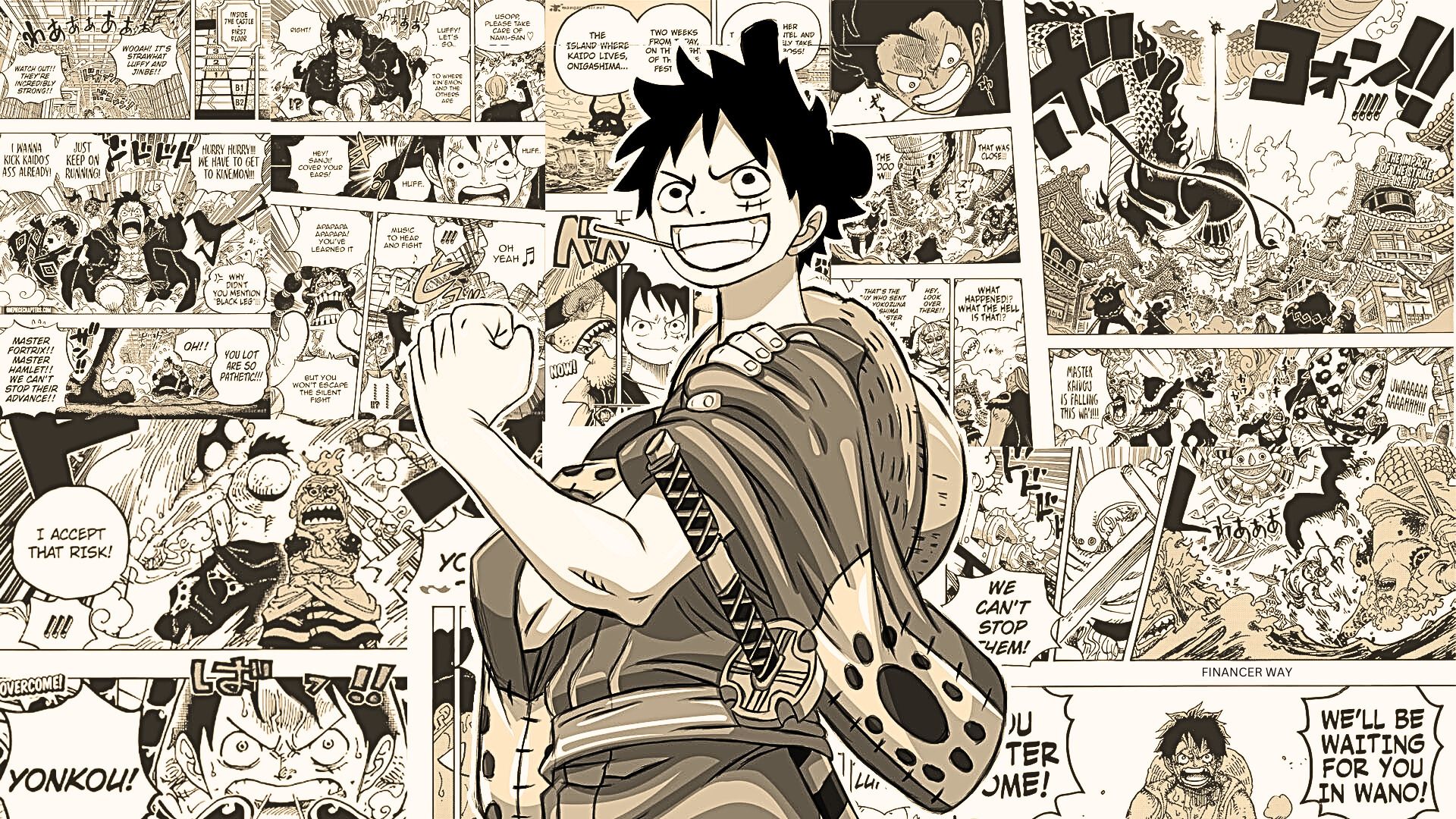One of the coolest things about One Piece is the way it builds its world. It’s not like your typical anime or manga where you’re stuck in one setting the whole time. Nope, One Piece is all about exploration! Luffy and the Straw Hat crew are constantly traveling to new islands, each one more unique and interesting than the last. You’ll go from tropical islands to cities floating in the sky, to underwater kingdoms—seriously, the variety is insane.
What makes it even better is that each place has its own culture, politics, and history. It’s like every island tells a new story, and it’s always tied into the bigger plot. There’s a whole world out there to discover, and you never know what crazy place the Straw Hats will land on next. That sense of adventure keeps the series exciting because you know that whatever comes next, it’s going to be something totally different from anything you’ve seen before.
Plus, the world of One Piece feels alive. There’s a massive political system with the World Government, the Marines, and the Revolutionary Army all vying for control, not to mention the dangerous Yonko (Emperors) ruling over large parts of the seas. And don’t forget the Grand Line, the unpredictable sea full of mysterious islands and powerful enemies. Oda, the creator, does an amazing job of making this world feel as real and expansive as our own, just with a lot more pirates and Devil Fruits!
Unforgettable Characters

If there’s one thing One Piece does exceptionally well, it’s creating characters that stick with you long after you’ve finished reading. The main crew—the Straw Hat Pirates—are a perfect example of this. Each member has their own distinct personality, dream, and quirks that make them truly memorable. Luffy, the rubbery, carefree captain who’s dead-set on becoming the Pirate King, is an absolute blast to follow. But then you’ve got Zoro, the stoic swordsman with a terrible sense of direction, and Nami, the brilliant navigator who’s obsessed with treasure but has a heart of gold. Every crew member brings something unique to the table, and their interactions are half the fun.
It’s not just the main crew, though. One Piece has a massive roster of supporting characters, villains, and allies who are just as interesting. Characters like Trafalgar Law, Vivi, or Jinbei all have complex motivations and backstories that make them more than just side characters—they’re an essential part of the adventure. And then there are the villains, who are some of the most iconic in anime. Whether it’s the ruthless Crocodile, the terrifying Kaido, or the chaotic Blackbeard, each villain has a personality and backstory that make them more than just “the bad guy.” You’ll find yourself both hating and appreciating them for how well they’re written.
What really sets these characters apart is how much they grow over time. In One Piece, character development isn’t just a one-time thing—it’s a journey. You get to see Luffy become a more responsible captain, Usopp overcome his fears, and even former enemies like Nico Robin join the crew and evolve into beloved members. By the time you’ve followed them through hundreds of chapters, it’s hard not to feel emotionally invested in each one of them.
Strong Themes of Freedom and Dreams
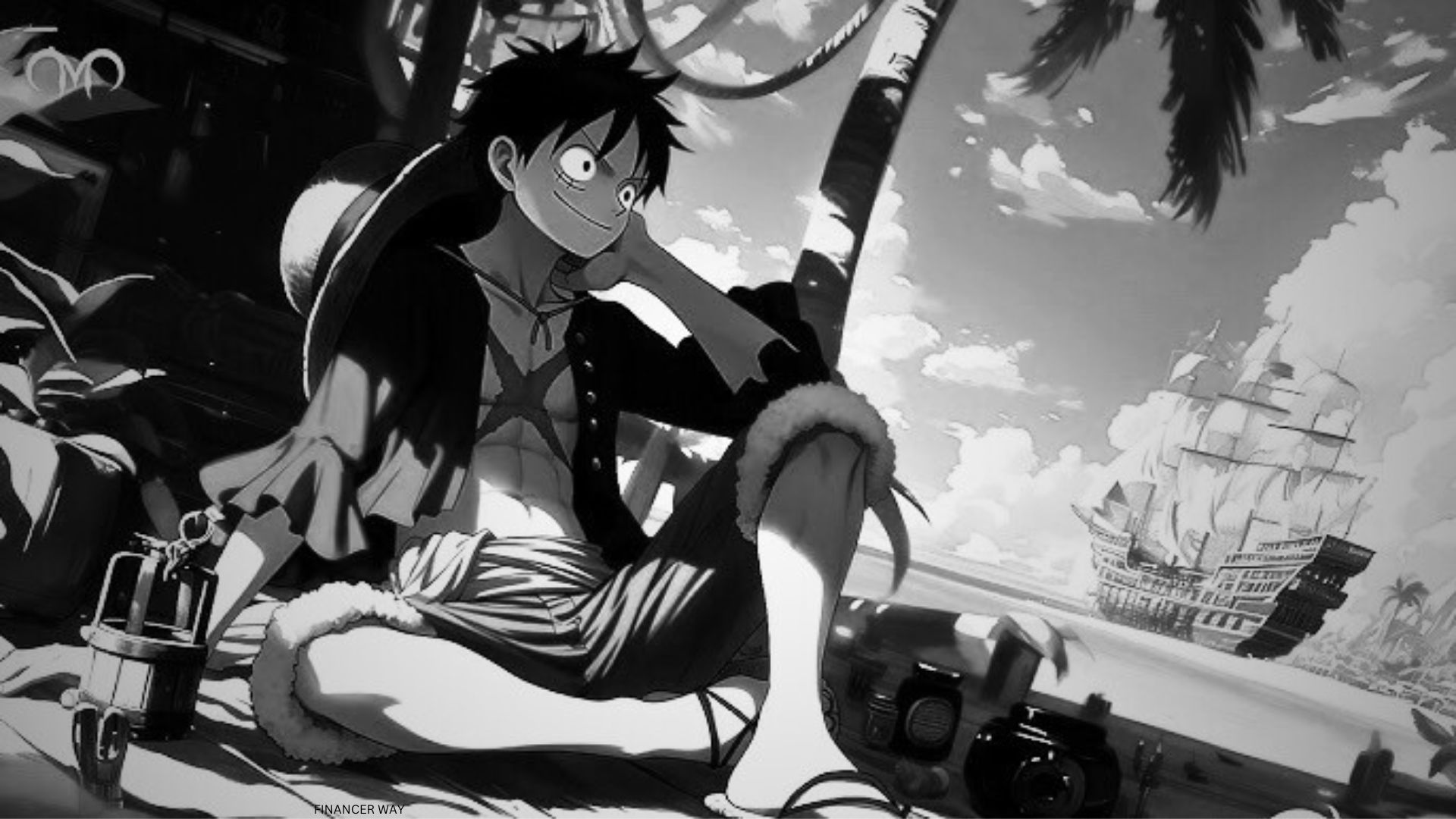
At the heart of One Piece is the powerful theme of freedom, and it’s one of the core reasons why the series resonates so deeply with its fans. Luffy, the main character, doesn’t just want to become the Pirate King for the fame or treasure—he believes that being the Pirate King means achieving ultimate freedom. And that’s what One Piece is really about: the freedom to chase your dreams, live your life on your own terms, and break free from oppression.
Each member of the Straw Hat crew has their own dream, and that’s what drives them forward. Luffy wants to be the Pirate King, Zoro aims to be the world’s strongest swordsman, Nami dreams of mapping the entire world, and Sanji longs to find the All Blue, the legendary sea where all fish species exist. What’s special about One Piece is how personal and meaningful these dreams are. They’re not just random goals—they’re rooted in each character’s past, struggles, and desires. Watching them pursue these dreams while overcoming obstacles makes their journey incredibly inspiring.
The theme of freedom is explored on a much larger scale, too. One Piece often touches on the fight against oppression, whether it’s freeing an island from a tyrant’s control, like Alabasta under Crocodile, or breaking the chains of slavery, as seen with the Fishmen and the Celestial Dragons. The world of One Piece is controlled by the corrupt World Government, and many of the major arcs revolve around the idea of rebellion—fighting for freedom against unjust rulers and systems. Luffy, with his carefree spirit and refusal to bow to anyone, becomes a symbol of resistance.
This idea of freedom ties into the series’ overarching theme of following your own path and never giving up on your dreams, no matter how impossible they may seem. Throughout the series, characters from all walks of life are driven by their dreams, and the message is clear: it’s not about how big or small your dream is, but the courage to pursue it that matters. Whether it’s Luffy wanting to reach the top of the pirate world or a side character like Coby who dreams of becoming a Marine admiral, One Piece celebrates the pursuit of personal freedom and ambition.
In One Piece, freedom isn’t just a theme—it’s the very essence of the story. It’s what makes Luffy and the Straw Hats such compelling heroes. Their refusal to be controlled, their loyalty to each other’s dreams, and their determination to carve their own destinies are what make the series such a moving and uplifting adventure.
Read More: Top 5 Most Touching Moments in One Piece
Emotional Backstories and Flashbacks
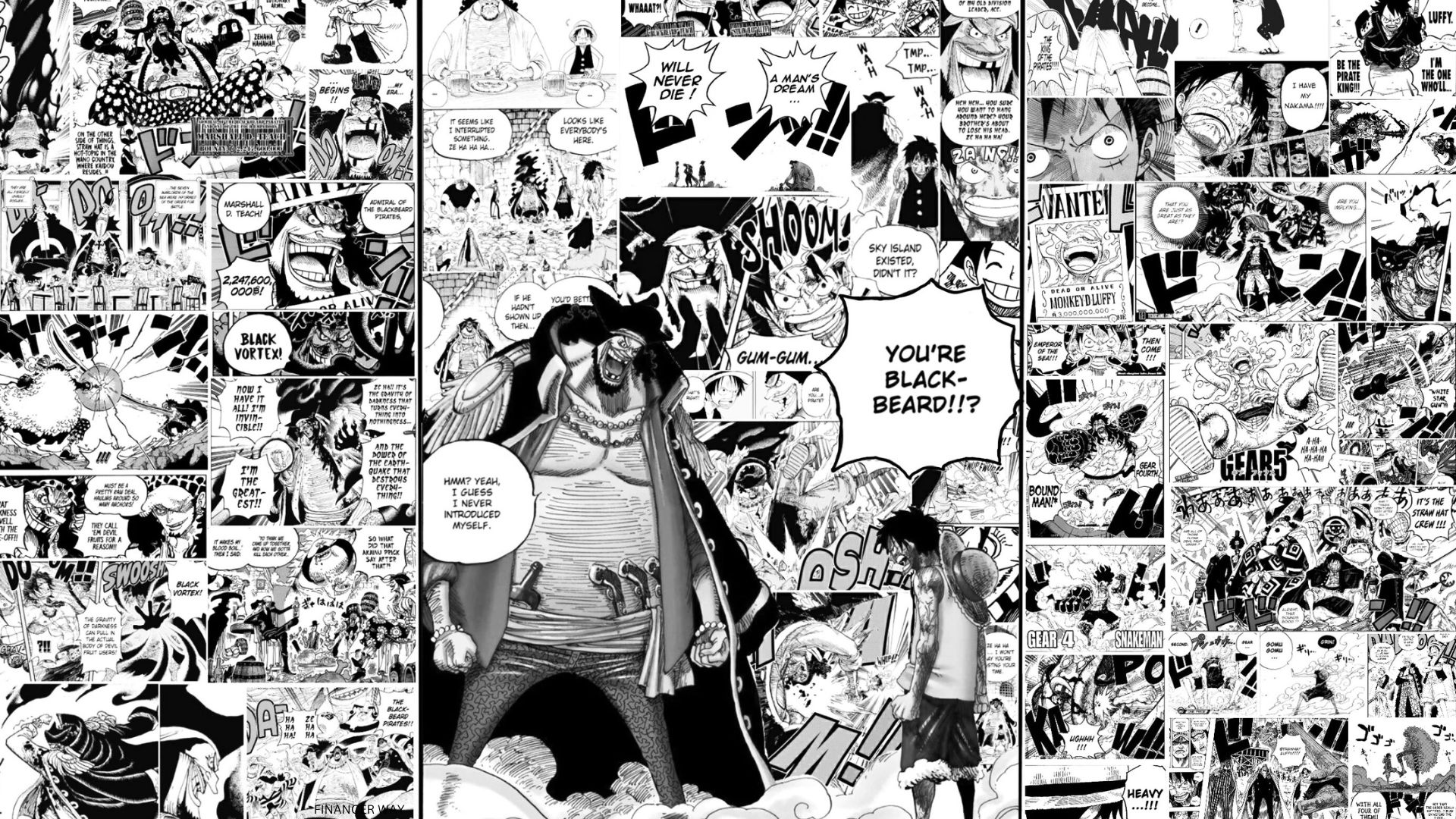
One of the most surprising things about One Piece is how emotional it can get. For a story about pirates going on wild adventures, the series really knows how to hit you in the feels, and a big part of that comes from the way it handles backstories and flashbacks. Almost every major character, whether they’re a member of the Straw Hat crew or a villain, has a deeply emotional backstory that adds layers to their personality and motivations.
Take Nami, for example. At first, she just seems like the greedy, treasure-obsessed navigator, but once her backstory with the Arlong Pirates is revealed, you start to understand why she’s that way. The story of how she was forced to work for Arlong to buy back her village, all while hiding her pain from everyone around her, makes you see her in a whole new light. And who could forget that powerful moment when she finally breaks down, asking Luffy for help, leading to one of the most iconic scenes in the series? It’s moments like this that show One Piece isn’t just about action—it’s about real, emotional stakes.
Every crew member has a story like this. Robin’s flashback in Ohara is heartbreaking, as you see her lose everything just for wanting to learn the truth about the world. Sanji’s tragic past of being abandoned and starving at sea with Zeff explains his deep respect for food and why he never lets anyone go hungry. These backstories are not just emotional—they’re integral to understanding why the characters are the way they are and why their dreams matter so much to them.
And it’s not just the heroes who get emotional backstories—many villains in One Piece have surprisingly tragic or complex pasts that make them more than just “the bad guy.” Characters like Doflamingo and Big Mom have flashbacks that show how their traumatic upbringings shaped their ruthless ways. It doesn’t excuse their actions, but it adds a level of depth that makes them more than just evil for the sake of being evil.
What makes these flashbacks so powerful is how they’re woven into the larger story. Oda has a knack for introducing a character and making you care about them, only to drop an emotional backstory that completely changes how you see them. These moments often come right before or during big story arcs, adding emotional weight to the battles and conflicts. By the time you reach the climactic fights, you’re not just rooting for the heroes to win—you’re emotionally invested in why they need to win.
In One Piece, the past isn’t just something that’s mentioned in passing—it’s a driving force that shapes the present and future for the characters. These emotional backstories and flashbacks add a level of depth that makes the series much more than a simple adventure story. They make you care, they make you cry, and they make One Piece an unforgettable experience.
Read More: The Powers of Bleach: The Thousand-Year Blood War Soul King Body Parts, Explained
Engaging and Strategic Battles

When it comes to battles in One Piece, you can expect a thrilling mix of creativity, strategy, and pure adrenaline. This isn’t just about who can hit the hardest; it’s about using each character’s unique abilities and intellect to outsmart opponents. From the very first arc, you’ll notice that fights are often dynamic and filled with unexpected twists, making every battle feel fresh and exciting.
One of the standout features of the One Piece battles is the diverse fighting styles employed by the characters. Luffy, with his rubbery body thanks to the Gomu Gomu no Mi (now known as the Hito Hito no Mi, Model: Nika), brings an innovative and playful approach to combat. He can stretch his limbs in ridiculous ways, which leads to some creative attacks that are as entertaining as they are effective. For example, his Gear Second technique boosts his speed and strength, while Gear Fourth transforms him into a massive, powerful version of himself. Watching Luffy unleash these techniques is like seeing a combination of martial arts and circus tricks.
But it’s not just Luffy who shines in battle. Zoro, the swordsman of the crew, has his own set of unique moves that revolve around his three-sword style. His battles often emphasize precision, strength, and a deep understanding of swordsmanship. Each fight has a different flavor, whether he’s taking on a powerful foe like Mihawk or defending his friends from overwhelming odds. And then there’s Sanji, whose kick-based fighting style is both elegant and ferocious. The way he incorporates his speed and agility adds another layer of excitement to battles.
What truly sets One Piece apart is how strategy plays a crucial role in the fights. It’s not just about brute strength; characters often rely on clever tactics and teamwork to overcome their enemies. For instance, the way the Straw Hats work together during battles showcases their strong bonds and trust in one another. You’ll see them coordinating attacks and using their individual strengths to cover for each other’s weaknesses. This teamwork is especially evident during major arcs like the Marineford War, where various factions and characters come together, leading to epic confrontations.
Additionally, battles often incorporate the surroundings and environmental factors, making each fight unique. Whether it’s using the terrain to their advantage or leveraging the elements, these fights are as much about clever maneuvers as they are about raw power. The Enies Lobby arc is a perfect example, where the crew faces off against the CP9 in a battle that showcases not just their abilities but also the environment of the judicial island itself.
Oda also makes sure that the stakes in battles are high. Characters often face significant challenges that test their limits, pushing them to evolve and grow. You’ll find yourself on the edge of your seat, wondering if your favorite characters will make it through. Moments of sacrifice, unexpected betrayals, and shocking reveals add emotional weight to the action, making each battle not just a physical struggle, but a test of character.
In short, the battles in One Piece are engaging, strategic, and full of surprises. They keep you guessing, cheering, and sometimes even crying, as the characters navigate their way through conflicts that are as much about their personal growth as they are about defeating their enemies. It’s this blend of action and emotion that makes the battles in One Piece not just memorable, but truly iconic.
Read More: Top 5 Most Touching Moments in One Piece
Intricate Plot Twists and Arcs
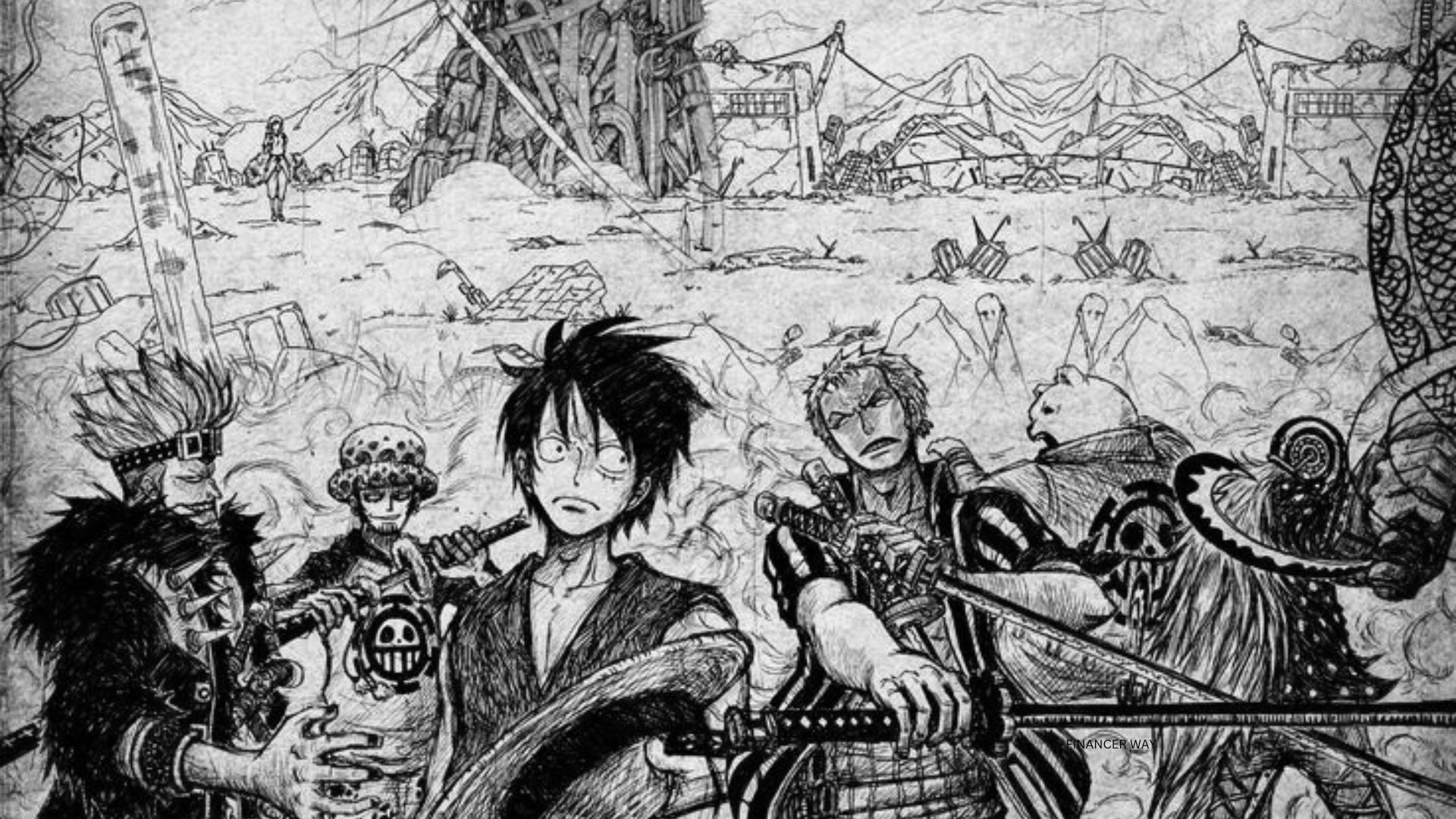
One of the things that keeps fans coming back to One Piece is the masterful way Oda weaves intricate plot twists and long story arcs that are full of surprises. This series is known for its grand narrative, and as you dive deeper into the world, you quickly realize that every detail matters. What seems like a small plot point or a seemingly random character will often come back to play a significant role later on, keeping you engaged and invested in the story.
Take the infamous Loguetown arc, for example. At first glance, it might seem like just another stop on the Straw Hats’ journey, but it sets up major events that unfold much later in the story. The introduction of characters like Smoker and the return of Gol D. Roger’s legacy create a ripple effect that resonates throughout the series, making you appreciate the foresight Oda had in crafting these interconnected storylines.
The longer arcs in One Piece are especially noteworthy. They often span multiple volumes and chapters, allowing for deep character development, world-building, and exploration of the overarching themes of the series. Arcs like Dressrosa and Wano are prime examples of this, featuring extensive casts of characters, multiple subplots, and twists that can leave you reeling. In Dressrosa, the conflict with Doflamingo introduces new allies, reveals the complexities of the world’s power dynamics, and showcases the emotional struggles of characters like Rebecca and Kyros. Oda does an incredible job of layering these arcs, so by the time you reach the climax, everything feels interconnected and meaningful.
And let’s not forget the jaw-dropping plot twists that Oda is famous for. The revelations about major characters—like the truth about Ace’s parentage or the shocking secrets behind the Void Century—are expertly placed throughout the series. These twists often come when you least expect them, leading to moments that redefine everything you thought you knew about the story and its characters. The impact of such revelations adds to the richness of the narrative, creating a web of intrigue that keeps you eager to read more.
Additionally, the pacing in One Piece allows for both intense action and quiet, reflective moments. After a high-stakes battle, Oda often takes the time to slow things down, letting characters process their experiences and relationships. This balance between action and character development is crucial, as it ensures that the emotional stakes remain high, even amidst the chaos of a battle.
What truly makes these plot twists and arcs shine is how they often tie back to the central themes of dreams, freedom, and the pursuit of one’s goals. Each arc contributes to the characters’ growth and their journeys toward their dreams, reinforcing the idea that every setback and revelation is part of a larger narrative.
In short, the intricate plot twists and well-crafted arcs in One Piece make it a standout series in the anime and manga world. Oda’s ability to weave together a rich tapestry of stories keeps you hooked, and the constant surprises ensure that the adventure never feels stale. You’ll find yourself thinking about the connections and implications long after you’ve finished reading, which is part of what makes One Piece such an enduring and beloved saga.
Read More: The Powers of Bleach: The Thousand-Year Blood War Soul King Body Parts, Explained
Humor and Lighthearted Moments
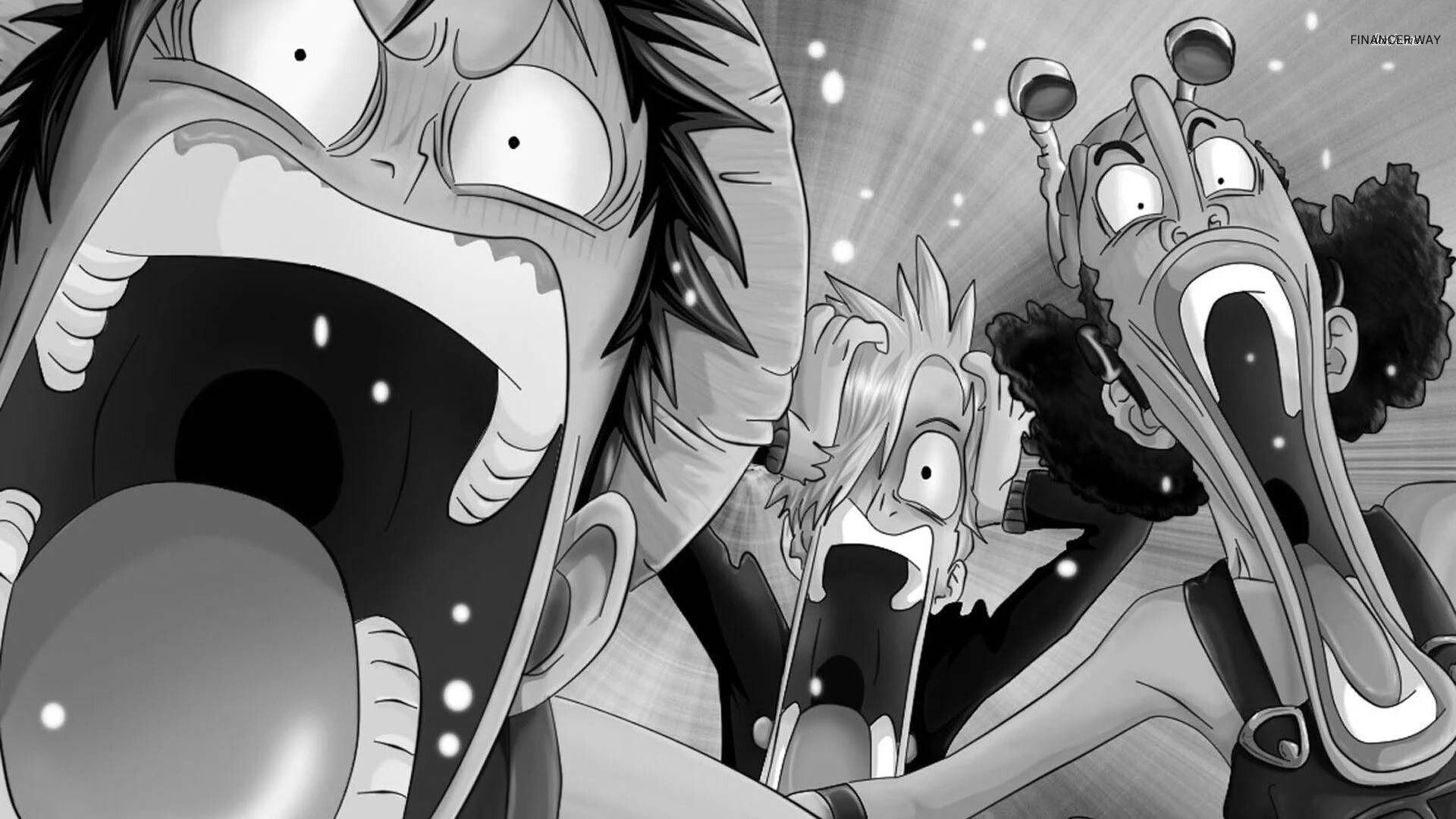
While One Piece is known for its epic battles and emotional depth, it also excels at balancing those intense moments with humor and lightheartedness. Oda’s comedic timing and creative gags are sprinkled throughout the series, making it a well-rounded experience that keeps the mood vibrant, even in the face of serious challenges.
From the very beginning, you’ll find that the characters have distinct quirks and comedic traits that make them endearing. Luffy’s childlike innocence and obliviousness often lead to hilarious situations. Whether he’s unintentionally causing chaos in a serious setting or misunderstanding basic social cues, his antics provide endless laughs. For instance, Luffy’s obsession with meat leads to some classic comedic moments, like when he completely ignores a dire situation because he’s focused on his next meal.
The humor doesn’t just come from Luffy, though. Characters like Usopp and Sanji add their own flavor of comedy to the mix. Usopp’s tall tales and over-the-top bravado often lead to funny misunderstandings, while Sanji’s chivalry towards women can create both humorous and awkward situations, especially when he’s met with fierce opponents or when he’s completely ignored. The interactions between the crew members are filled with banter and playful teasing, which creates a warm and entertaining dynamic that keeps you smiling.
Oda also uses situational comedy effectively. Many arcs feature ridiculous scenarios that seem absurd yet work perfectly within the context of the story. The Sabaody Archipelago arc, for instance, is packed with humorous moments, such as the Straw Hats encountering the Eleven Supernovas and their bizarre personalities. The sudden appearance of the Space Pirate Franky or the misunderstandings with the Celestial Dragons highlight the absurdity of the world while also serving as a commentary on its various social dynamics.
But the humor in One Piece is not just for entertainment; it also serves to deepen character relationships and provide a breather during intense moments. The lighthearted interactions help to reinforce the bonds between the crew members, making their friendship feel genuine and relatable. It’s these comedic breaks that allow the audience to appreciate the stakes and emotions even more when the story takes a darker turn.
This blend of humor and serious themes makes One Piece a multifaceted series. The ability to make you laugh one moment and then tug at your heartstrings the next is a testament to Oda’s storytelling prowess. You’ll find yourself chuckling at the antics of the Straw Hats while simultaneously rooting for them through their struggles.
In essence, the humor in One Piece is an essential ingredient that contributes to its charm. It brings a sense of joy and lightness to a world filled with danger and conflict, reminding us that even amidst adversity, laughter can be a powerful force. The delightful mix of comedy and adventure is part of what makes One Piece such a beloved series, creating an experience that’s as fun as it is impactful.
Stunning Art and Unique Character Designs

Another standout feature of One Piece is its vibrant art style and the unique character designs that set it apart from other series in the genre. From the very first chapter, you’ll notice that Oda’s artwork has a distinct flair, characterized by exaggerated proportions, bright colors, and imaginative landscapes that bring the world of pirates to life. Each island and setting is visually striking, immersing you in the rich diversity of the One Piece universe.
The character designs are particularly noteworthy. Oda has a talent for creating visually memorable characters, each with their own distinctive look that reflects their personality, background, and abilities. Take Luffy, for instance—his simple, carefree appearance, with his straw hat and wide grin, perfectly embodies his adventurous spirit and youthful energy. In contrast, Zoro’s rugged appearance and serious demeanor showcase his dedication to becoming the strongest swordsman. Every crew member, from Nami’s vibrant orange hair to Sanji’s suave demeanor, stands out in their own right, making the ensemble cast easily recognizable and relatable.
What’s impressive is how Oda manages to maintain a sense of individuality in each character, even when they belong to the same faction or group. For example, the various members of the Marines and the World Government each have unique designs that reflect their rank and personality. Characters like Admiral Kizaru, with his laid-back demeanor and striking yellow hair, contrast sharply with the imposing and serious nature of Admiral Akainu. This attention to detail ensures that even minor characters are visually interesting and memorable.
The art style also enhances the humor and emotional moments throughout the series. Oda’s ability to exaggerate expressions—like Luffy’s over-the-top joy or Zoro’s infamous cluelessness—adds a comedic flair to interactions. During intense moments, the art shifts to convey emotions powerfully, with sharp lines and dramatic angles that heighten the stakes of the story. This dynamic range keeps the visuals engaging and helps emphasize the narrative’s emotional depth.
Additionally, the imaginative landscapes and settings are a visual treat. Each island the Straw Hats visit has its own unique aesthetic, whether it’s the lush greenery of Skypiea, the vibrant colors of Dressrosa, or the icy expanse of Wano. Oda’s world-building shines through in the intricate details of each location, making them feel alive and inviting. The way he combines fantastical elements—like sky islands, underwater cities, and enormous sea creatures—adds to the sense of wonder and adventure that permeates the series.
In summary, the stunning art and unique character designs in One Piece play a crucial role in its appeal. Oda’s distinct style and attention to detail bring the world and its inhabitants to life, making every panel a visual delight. Whether it’s through humorous expressions or breathtaking landscapes, the artwork enhances the storytelling, ensuring that One Piece remains a feast for the eyes while delivering an unforgettable narrative.
A Sense of Adventure and Exploration

At its core, One Piece is a story about adventure, exploration, and the boundless quest for dreams. The very premise of the series revolves around the journey of the Straw Hat Pirates as they sail through the unpredictable seas of the Grand Line, facing danger and uncovering new mysteries along the way. This sense of adventure is what makes the series so exhilarating and relatable, drawing readers into a world filled with endless possibilities.
From the outset, the allure of the ocean and the thrill of discovering new islands set the tone for Luffy’s journey. Each new location brings with it a unique culture, history, and challenges that the crew must navigate. Whether it’s the whimsical and colorful landscapes of a place like Zou or the dark and dangerous atmosphere of Dressrosa, every island offers something new and exciting. This diversity keeps the story fresh and engaging, as you never quite know what to expect next.
The spirit of exploration is further emphasized by the variety of characters they encounter on their journey. Each island is populated with its own residents, each with their own stories and struggles. The Straw Hats’ interactions with these characters often lead to significant plot developments, as they forge alliances and friendships that enrich their adventure. For example, in the Fish-Man Island arc, the crew’s connection with the merfolk and their struggles against oppression not only highlights the series’ overarching themes but also deepens the narrative and adds layers to the world-building.
Moreover, the concept of “adventure” in One Piece extends beyond just physical exploration. It encompasses the idea of personal growth and the pursuit of one’s dreams. Every crew member is on their own personal journey, seeking to achieve their individual aspirations while supporting one another. This camaraderie and mutual encouragement create a sense of warmth and belonging that resonates with fans. It reminds us that the journey is often just as important as the destination.
Luffy’s unwavering determination and relentless pursuit of becoming the Pirate King serve as a constant source of inspiration. His adventures are not merely about seeking treasure but about discovering what it truly means to be free. This theme of freedom is central to the adventure narrative, emphasizing that the greatest treasure of all lies in the experiences and bonds formed along the way.
Additionally, Oda’s knack for foreshadowing future events adds to the sense of adventure. Clues and hints about the larger world and its mysteries create a thrilling sense of anticipation, making readers eager to uncover the secrets that lie ahead. The mention of the “One Piece,” the legendary treasure, serves as a tantalizing promise of what awaits at the end of the journey, fueling the excitement and curiosity about the world.
In conclusion, One Piece embodies the essence of adventure and exploration, both in its vibrant world and the journeys of its characters. The excitement of sailing into the unknown, meeting new friends and foes, and striving toward dreams creates a captivating experience that resonates with fans. It’s a reminder that life is an adventure, filled with unexpected turns and endless possibilities, and that the journey itself is as valuable as the ultimate goal. Whether you’re an aspiring pirate or simply a dreamer, One Piece encourages you to set sail on your own adventure and embrace the thrill of discovery.
Read More: The Powers of Bleach: The Thousand-Year Blood War Soul King Body Parts, Explained
Rich World-Building and Lore
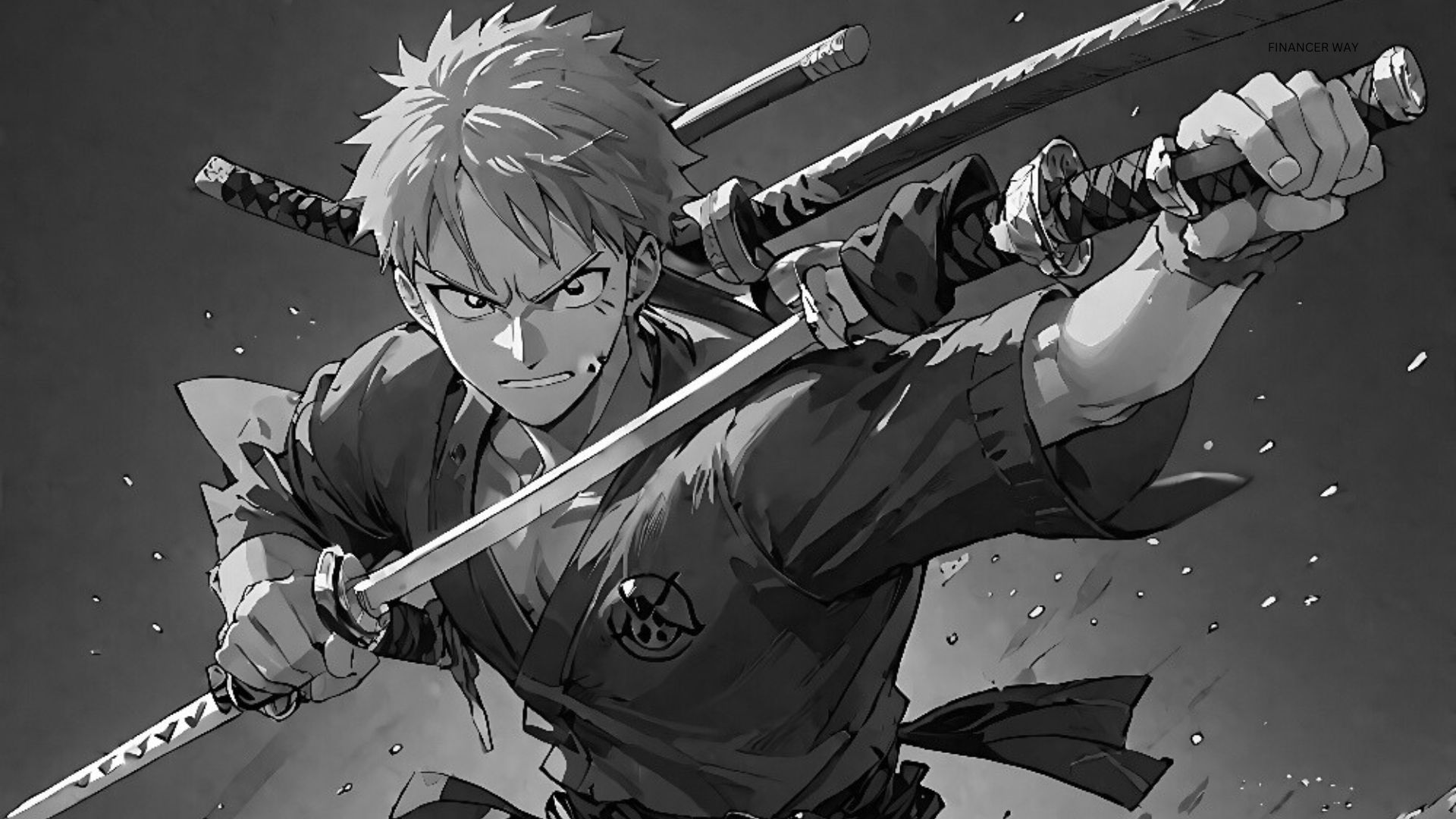
One Piece is not just a story about pirates and adventures; it’s a richly crafted universe filled with intricate lore and a vast world that feels alive. Oda’s world-building is one of the series’ most impressive aspects, creating a setting that is both detailed and expansive, allowing readers to immerse themselves fully in the journey of the Straw Hat Pirates.
One of the most remarkable elements of the world-building is the diversity of islands and cultures that Luffy and his crew encounter. Each island has its own unique geography, traditions, and social structures, reflecting the creativity and imagination of Oda. From the vibrant, tropical environment of Alabasta to the mystical, sky-bound Skypiea, every location feels distinct and memorable. This diversity not only keeps the narrative fresh but also adds depth to the world, as readers get to explore different facets of life in the One Piece universe.
The political landscape of One Piece is another crucial aspect of its lore. The series delves into the dynamics between the various factions, including pirates, Marines, and the World Government. The tensions between these groups are often rooted in complex histories and power struggles, adding layers of intrigue to the story. The infamous Marine Admirals and the Celestial Dragons represent the oppressive forces within the world, creating a backdrop of conflict that the Straw Hats must navigate. Oda’s ability to weave these political elements into the overarching narrative enriches the experience, making it clear that the world of One Piece is not just about adventures on the high seas, but also about the moral dilemmas and societal issues that shape its characters.
Oda has also crafted a mythology that runs deep through the series, with significant events and legends that impact the current storyline. The Void Century, the Ancient Weapons, and the history of the World Government serve as pivotal elements that drive the plot forward. These aspects of lore pique the curiosity of fans, as they piece together the mysteries that lie within the world’s history. The scattered fragments of knowledge regarding the legendary One Piece treasure create a sense of urgency and excitement, compelling readers to delve deeper into the lore.
The introduction of various races and species—such as Fishmen, Giants, and Mink—is another fascinating aspect of One Piece’s world-building. Each race comes with its own culture, history, and struggles, showcasing Oda’s commitment to inclusivity and diversity. The representation of social issues, like discrimination faced by Fishmen, adds a layer of depth that resonates with real-world issues, making the narrative feel relevant and impactful. By highlighting these differences, Oda enriches the world, encouraging readers to appreciate the beauty of diversity and the strength that comes from unity.
Moreover, Oda’s attention to detail in crafting the lore means that even the smallest elements can have significant implications for the plot. Characters often reference historical events, legends, or myths that tie back into the central narrative, making the world feel cohesive and interconnected. This intricate web of stories ensures that every piece of information contributes to the overall tapestry of the series, rewarding readers for their attention to detail.
In summary, the rich world-building and lore in One Piece create a captivating backdrop for the adventures of Luffy and his crew. Oda’s dedication to crafting a diverse, complex, and vibrant universe allows readers to fully immerse themselves in the narrative, enhancing their experience and connection to the story. The intricate details of the world—its cultures, politics, and history—make One Piece not just a tale of pirates, but an epic saga that explores the depths of human experience and the bonds that unite us all.
Themes of Friendship and Dreams
At its heart, One Piece is a celebration of friendship and the relentless pursuit of dreams. These themes are intricately woven into the fabric of the story, resonating deeply with fans and adding emotional weight to the adventures of the Straw Hat Pirates. As you journey with Luffy and his crew, you’ll discover that their relationships and aspirations are what truly drive the narrative forward.
The theme of friendship is a cornerstone of the series. From the moment Luffy sets out to form his crew, it’s clear that building strong bonds with others is essential to his journey. Each member of the Straw Hat crew is not only a comrade in battle but also a friend who supports one another through thick and thin. Whether it’s Zoro pledging his loyalty to Luffy as his captain or Nami opening up about her tragic past, these moments of connection reinforce the idea that true strength comes from the bonds we form with others.
The crew’s diverse backgrounds and unique personalities add depth to their friendships. They come from different walks of life, each carrying their own dreams and burdens. Luffy’s unwavering belief in his friends serves as a driving force, motivating them to overcome their fears and insecurities. For instance, Sanji’s journey to find the All Blue—a legendary sea where all fish meet—reflects his dreams of uniting his love for cooking with his desire to help others. Through their adventures, the crew members learn to trust and rely on each other, creating a sense of unity that is both heartwarming and inspiring.
Furthermore, the pursuit of dreams is a central theme that resonates throughout the series. Each character harbors their own aspirations, which serve as a source of motivation and purpose. Luffy’s dream of becoming the Pirate King is not just about power or treasure; it symbolizes freedom and the desire to explore the world without limitations. Similarly, Nami dreams of mapping the entire world, Robin seeks to uncover the truth about the Void Century, and Franky aspires to build a ship that can sail to the end of the Grand Line. These dreams reflect the universal desire to achieve one’s goals and leave a mark on the world.
The emotional stakes tied to these dreams are often heightened by the characters’ struggles. The series does not shy away from showing the hardships and sacrifices they endure in their pursuit. For example, Nami’s heart-wrenching backstory highlights the lengths she goes to for her village, while Zoro’s commitment to becoming the strongest swordsman leads him to face formidable challenges. These moments of vulnerability and resilience showcase the depth of their character development, making their journeys feel all the more impactful.
Moreover, the theme of friendship and dreams is beautifully illustrated through the bonds formed not just within the Straw Hat crew, but also with allies and even former enemies. The relationships they cultivate along the way—whether with the people of Dressrosa or the residents of Fish-Man Island—emphasize the importance of connection and understanding in overcoming adversity. These alliances illustrate how dreams can inspire people to come together, regardless of their backgrounds or past conflicts.
In conclusion, the themes of friendship and dreams are what make One Piece resonate with fans on a profound level. Oda’s ability to portray the importance of relationships and the pursuit of personal aspirations creates an emotional core that elevates the narrative beyond mere adventure. As you sail alongside Luffy and the crew, you’re reminded that life’s greatest treasures lie not just in the destinations we reach, but in the friendships we forge and the dreams we strive to achieve together. This powerful message of camaraderie and perseverance is ultimately what makes One Piece an enduring and beloved series, inspiring readers to chase their dreams and cherish the bonds they share with others.
FAQs About One Piece
1. What is One Piece about?
One Piece follows the adventures of Monkey D. Luffy, a young pirate with the ability to stretch his body like rubber after eating a Devil Fruit. Luffy assembles a diverse crew of pirates, known as the Straw Hats, as they journey across the Grand Line in search of the ultimate treasure, the One Piece, in order to fulfill Luffy’s dream of becoming the Pirate King.
2. Who created One Piece?
One Piece was created by Eiichiro Oda, who began serializing the manga in Shueisha’s Weekly Shōnen Jump magazine in 1997. The series has since become one of the best-selling manga of all time.
3. Where can I read One Piece?
One Piece can be read through various platforms, including:
- Official Manga Platforms: VIZ Media’s Shonen Jump website and app offer digital chapters of One Piece for reading.
- Physical Copies: You can purchase volumes from bookstores or online retailers.
- Library Services: Many libraries offer physical copies or access to digital manga services.
4. Is One Piece appropriate for all ages?
One Piece is generally suitable for older children and teens, but it does contain some violence and mild themes that may not be appropriate for very young readers. It’s often rated for older audiences, so parental discretion is advised.
5. How many chapters and episodes does One Piece have?
As of now, One Piece has over 1,100 chapters in the manga and more than 1,000 episodes in the anime. The series is still ongoing, with new chapters and episodes being released regularly.
6. Are there any spin-offs or movies related to One Piece?
Yes! One Piece has several spin-off manga, novels, and movies. Some notable films include One Piece: Stampede, One Piece Film: Z, and One Piece: Strong World. There are also numerous video games based on the series.
7. What are the main themes of One Piece?
One Piece explores several key themes, including:
- Friendship and camaraderie: The bonds between the Straw Hat crew are central to the story.
- Dreams and aspirations: Each character has their own unique dreams they strive to achieve.
- Adventure and exploration: The series emphasizes the thrill of exploration and discovery.
- Freedom and individuality: Many characters fight against oppressive forces to pursue their freedom.
8. How long will it take to catch up on One Piece?
Catching up on One Piece can vary greatly depending on your reading or watching pace. Reading the manga might take less time since you can skip filler arcs, while watching the anime involves watching over 1,000 episodes, including filler episodes. Fans often recommend reading the manga for a more streamlined experience.
9. What is a Devil Fruit?
Devil Fruits are special fruits in the One Piece world that grant those who consume them unique powers, often at the cost of their ability to swim. There are three main types of Devil Fruits: Paramecia (which grant a wide range of powers), Zoan (which allow the user to transform into animals), and Logia (which grant control over natural elements).
10. Where can I watch the One Piece anime?
The One Piece anime can be watched on various streaming platforms such as Crunchyroll, Funimation, and Netflix. Availability may vary by region, so it’s a good idea to check your local listings for access.
